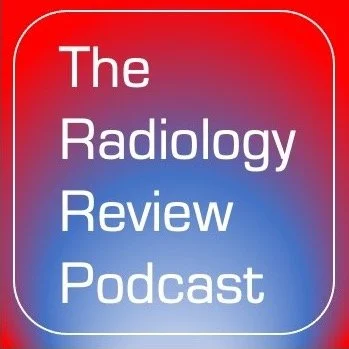Nuclear Medicine Dementia Imaging
New podcast episode: Nuclear Medicine Dementia Imaging. Check out the free study guide on this topic by clicking here.
Show Notes/Study Guide:
Let’s start with two neuroanatomy questions pertinent to nuclear brain imaging for dementia.
Where is the precuneus located in the brain?
The precuneus is in the medial aspect of each parietal lobe, anterior to the cuneus which is in the superior occipital lobe. As a simplification, this is essentially the medial aspect of the parietal lobe, just in front of the occipital lobe. Normal or abnormal uptake in the precuneus on FDG-PET imaging is of importance for dementia imaging, so make sure you know where this is. Look up images on your own to drive this home.
Where is the posterior cingulate cortex located in the brain?
The posterior cingulate cortex is often simply called the posterior cingulate and is part of the cingulate gyrus. This is located medially in the brain near the midline, and is located just above the corpus callosum, and anterior to the parieto-occipital sulcus. As a simplification, if you look at the part of the brain that is just above the posterior aspect of the corpus callosum near the midline, that is where the posterior cingulate resides. Normal or abnormal uptake in the posterior cingulate is of importance for dementia imaging. Make sure you know where this is and look up images on your own to drive this home.
Remember, that the precuneus and posterior cingulate are both located in the medial aspect of the brain. On a sagittal view, the posterior cingulate will be just above the posterior aspect of the corpus callosum and just above the posterior aspect of the posterior cingulate will be the precuneus.
The key for nuclear medicine dementia imaging with FDG-PET on radiology board exams is to remember patterns of hypometabolism in the brain for each dementia diagnosis. This is not easy to do and requires repetition. My goal is to help drive home some of these classic patterns of dementia on FDG-PET to help you succeed on these questions on radiology and nuclear medicine board exams. There are exceptions to some of the basic patterns, and many variant presentations that exist, but I am going to keep this review focused on the more common, classic, and potentially testable concepts for board exams.
For dementia imaging, what diagnosis is suggested on FDG-PET of the brain when decreased uptake is seen in the frontal lobes and temporal lobes?
Frontotemporal dementia. This is very appropriately named relative to FDG uptake that characteristically shows hypometabolism in the frontal and temporal lobes.
For dementia imaging, what diagnosis is suggested on FDG-PET of the brain when decreased uptake is seen in the left temporal region, with normal uptake elsewhere?
Semantic dementia is suggested when isolated hypometabolism on FDG-PET is seen in the left temporal region with no anatomic explanation such as stroke or a mass lesion.
For dementia imaging, what diagnosis is suggested on FDG-PET of the brain when decreased uptake is seen bilaterally in the precuneus and temporal regions of the brain?
Hypometabolism on FDG-PET of the brain that is seen bilaterally in the precuneus and temporal regions suggests a diagnosis of Alzheimer disease, dementia with Lewy bodies, or posterior cortical atrophy.
If Alzheimer disease, dementia with Lewy bodies, and posterior cortical atrophy all classically present with decreased bilateral uptake in the precuneus and temporal regions of the brain, what additional features on FDG-PET of the brain can help differentiate between these entities?
Alzheimer disease: decreased uptake in the posterior cingulate and normal occipital lobe uptake favors Alzheimer disease over dementia with Lewy bodies.
Dementia with Lewy bodies: decreased occipital lobe uptake is a characteristic feature on FDG-PET of the brain for dementia with Lewy bodies.
Posterior cortical atrophy: decreased uptake in both the posterior cingulate and occipital lobes favors posterior cortical atrophy.
Let’s summarize the classic FDG-PET imaging features of Alzheimer disease, dementia with Lewy bodies, and posterior cortical atrophy one more time to hopefully help clarify the similarities and differences between these three entities:
Alzheimer disease: bilateral decrease in uptake in the precuneus, temporal, and posterior cingulate regions with normal occipital lobe uptake. I expect on board exams that frontal lobe uptake would probably be shown as normal, but frontal lobe hypometabolism can be seen even with early-stage Alzheimer disease but is typically not included in the “classic pattern” of Alzheimer hypometabolism because it is variable.
Dementia with Lewy bodies: bilateral decreased uptake in the precuneus, temporal and occipital lobe regions with often normal or less commonly abnormal posterior cingulate uptake.
Posterior cortical atrophy: Bilateral decrease in uptake in the precuneus, temporal, posterior cingulate, and occipital lobe regions. This has decreased uptake in all these more posterior regions; hence “posterior” cortical atrophy can help you remember this. In contrast, Alzheimer disease classically has normal occipital lobe uptake and dementia with Lewy bodies may or may not have normal posterior cingulate uptake.
If following FDG-PET of the brain, one cannot differentiate between Alzheimer disease and dementia with Lewy bodies, what additional nuclear brain imaging test could be performed to help differentiate between these entities?
Dopamine transporter imaging with I123 Ioflupane. If dopamine transporter imaging is abnormal, meaning abnormal uptake is seen in either or both caudate and putamen, then dementia with Lewy bodies would be confirmed. If uptake is normal in the caudate and putamen, this supports Alzheimer disease.
For dementia imaging, what are classic imaging patterns on FDG-PET of the brain for primary progressive aphasia?
Isolated hypometabolism in the left frontal lobe, with normal uptake elsewhere, can be seen with primary progressive aphasia.
A more advanced concept is that logopenic primary progressive aphasia also exists wherein left precuneus and left temporal hypometabolism is seen. This is considered a left sided variant of Alzheimer disease.
For dementia imaging, what are classic imaging patterns on FDG-PET of the brain for corticobasal degeneration?
Hypometabolism in the frontal lobe, basal ganglia, and primary sensorimotor cortex is the pattern associated with corticobasal degeneration.
For dementia imaging, which diagnoses are suggested with occipital lobe hypometabolism?
Occipital lobe hypometabolism is classically seen with both posterior cortical atrophy and dementia with Lewy bodies. More specifically, abnormal occipital lobe uptake with these diagnoses would typically manifest with more severe loss in the lateral occipital lobe cortex and relative sparing of uptake in the medial occipital cortex/primary visual cortex. This has been termed the “occipital tunnel” sign.
The “cingulate island” sign also exists wherein one sees decreased occipital uptake combined with preserved posterior cingulate uptake, which supports a diagnosis of dementia with Lewy bodies.
Finally, a review of nuclear brain imaging of dementia would not be complete without discussing amyloid and tau PET imaging. First, there are various names for the amyloid PET imaging agents I think you should be familiar with, so if you see one of these in a question stem or answer list, you will recognize these as amyloid PET imaging agents for dementia/Alzheimer imaging. These include C-11 Pittsburgh compound B (essentially the original agent) as well as the newer and probably more likely to be tested agents 18F flutametamol, 18F florbetapir, and 18F florbetaben. Each of these agents bind and show uptake at sites of beta amyloid and allow for amyloid deposition to be detected in the brain on PET imaging without the necessity of autopsy, which is clearly advantageous.
In terms of Tau PET imaging, I would be aware that these agents exist and are being studied for the diagnosis of Alzheimer disease and other so called tauopathies such as progressive supranuclear palsy. One example is 18F flortaucipir.
What are classic imaging features on amyloid PET imaging to suggest a diagnosis of amyloid deposition/Alzheimer dementia?
On amyloid PET imaging, one is looking for increased cortical uptake with loss of normal grey-white matter differentiation to support a positive scan. Note that there are three FDA-approved amyloid PET agents (potentially more depending on how far in the future you are listening to this episode) and each have differences in uptake and abnormal interpretation criteria. Therefore, agent-specific reader trainings exist and must be followed for clinical use of these agents. However, a common theme among these to remember for board exams is to look for loss of expected gray-white matter contrast, wherein a normal scan shows white matter with uptake above that of the gray matter. However, when amyloid deposition is present in the cortex, you will start to see uptake in the cortex and the gray-white matter differentiation can be lost, supporting amyloid deposition is present in the gray matter cortex.
Preservation of gray-white matter differentiation is evidence of a normal or negative scan. Uptake in the cortical gray matter that extends to the periphery of the brain with loss of gray-white matter differentiation is evidence of an abnormal or positive study. The number of positive cortical regions to confirm a positive scan varies between radiopharmaceuticals, as does the definition of region positivity, so one must refer to the manufacturer guidelines for more specific interpretation criteria. I assume that knowing these radiopharmaceutical-specific imaging interpretation criteria would be beyond the scope of the Core Exam.
True or false? Cognitively normal individuals can have an abnormal amyloid PET scan.
True. Up to 25% of cognitively normal individuals will show amyloid deposition on an amyloid PET scan. However, that does not mean this scan is without potential value. A positive amyloid PET scan in the appropriate clinical setting can support a diagnosis of Alzheimer dementia through confirmation of amyloid deposition in the brain but a negative amyloid PET scan removes Alzheimer dementia as a leading consideration and makes a diagnosis of Alzheimer disease unlikely.





